|
Genres, Themes, Actors, and Directors:
- Akira Kurosawa Films
- Historical Drama
- Japanese Films
- Royalty and Nobility
- Samurai
- Shakespeare
- Toshiro Mifune Films
Review:
Akira Kurosawa had purportedly wanted to make an adaptation of Shakespeare’s Macbeth for awhile, but delayed this production given the release of Orson Welles’ adaptation in 1948. This highly stylized iteration (incorporating elements of Noh drama) succeeds on its own merits, transplanting Shakespeare’s play from Scotland to feudal Japan, retaining none of Shakespeare’s original text, and replacing the three witches with a forest spirit:
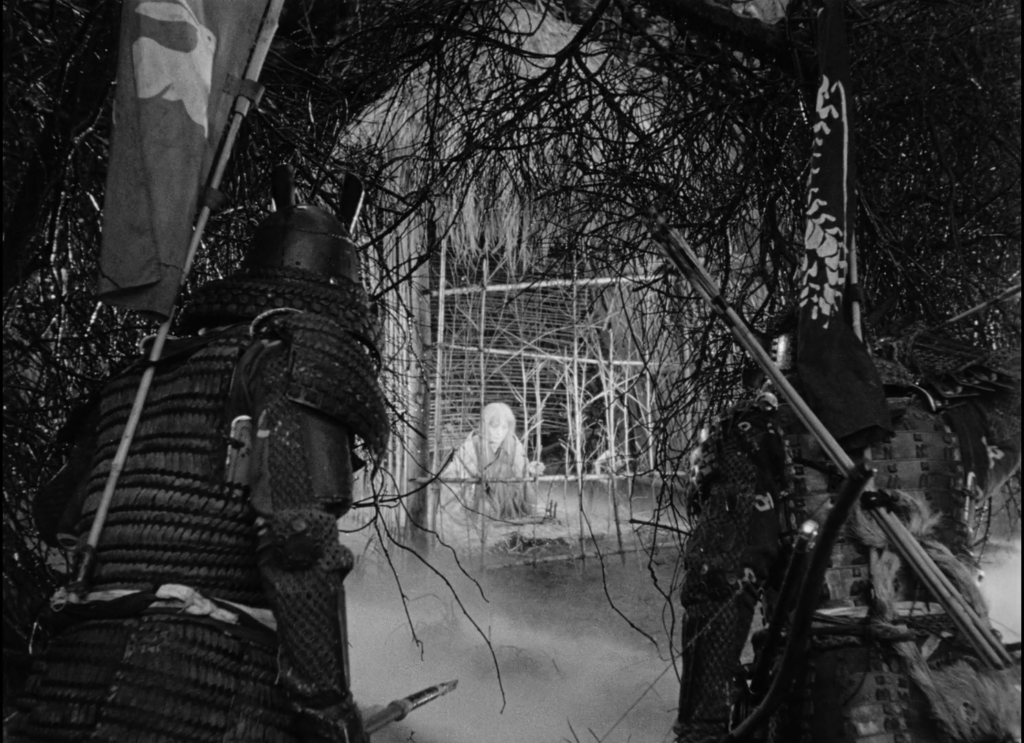
Indeed, as described by film scholar Stephen Prince in his essay for Criterion Collections:
Kurosawa’s movie is a brilliant synthesis of diverse cultural, aesthetic, and historical sources, only one skein of which derives from Shakespeare… Kurosawa often turned to foreign literary works for his films, but in all cases, the result was a transposition of the source rather than anything as straightforward as an adaptation. His appropriations of Shakespeare… were acts more of historiography than of analysis, and descriptions of the films as adaptations minimize the true nature of what Kurosawa accomplished. In Throne of Blood, with his keenly developed sense of Japanese history, he found a kind of mirror universe in the period of turmoil, treachery, and succession battles that Shakespeare wrote about in Macbeth.
Prince goes on to describe Japan’s Sengoku period (1467-1615), “which was marked by internecine conflicts among rival clans, the absence of a central political power, and the kind of treachery, prevarication, and murder that Kurosawa dramatizes” in this film — thus assuring us that the events displayed are entirely authentic to the setting. (It seems, sadly, that war and paranoid power grabs are both universal and timeless among humanity.)
In terms of parallels between the two tales, Washizu’s wife (stoic Yamada) is just as cruelly ambitious and neurotically guilty as Lady Macbeth, attempting in vain to cleanse her hands of the blood she’s caused to spill:
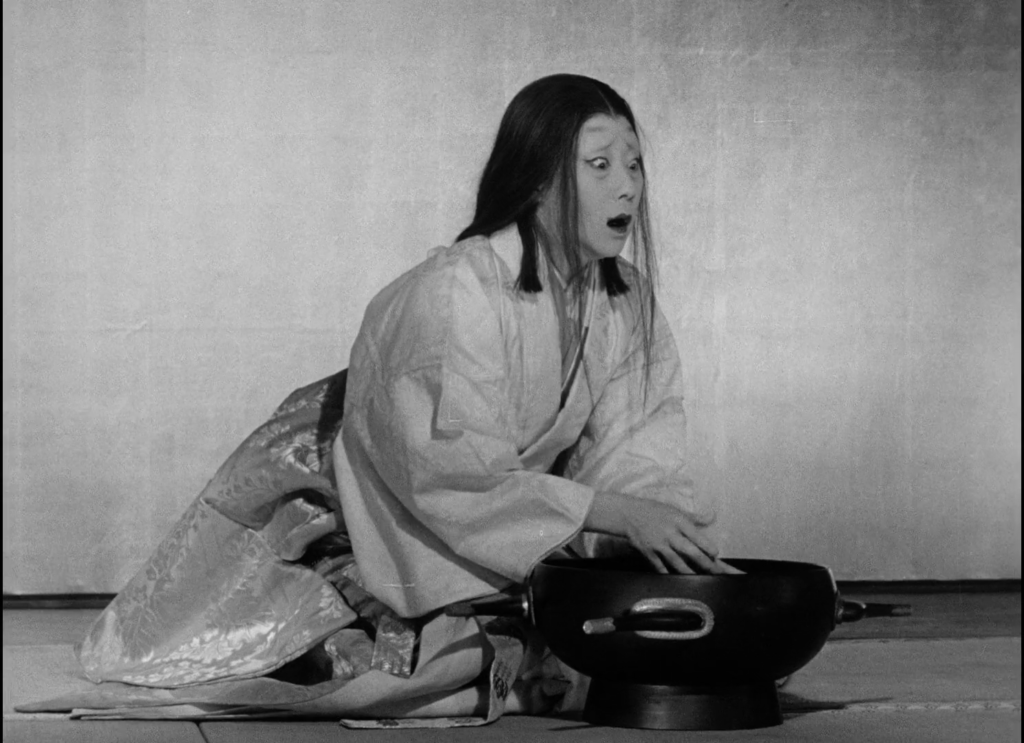
… and while Washizu himself suffers a different type of final blow than Macbeth, it is most definitely fatal (and oh-so-dramatic to watch on-screen).
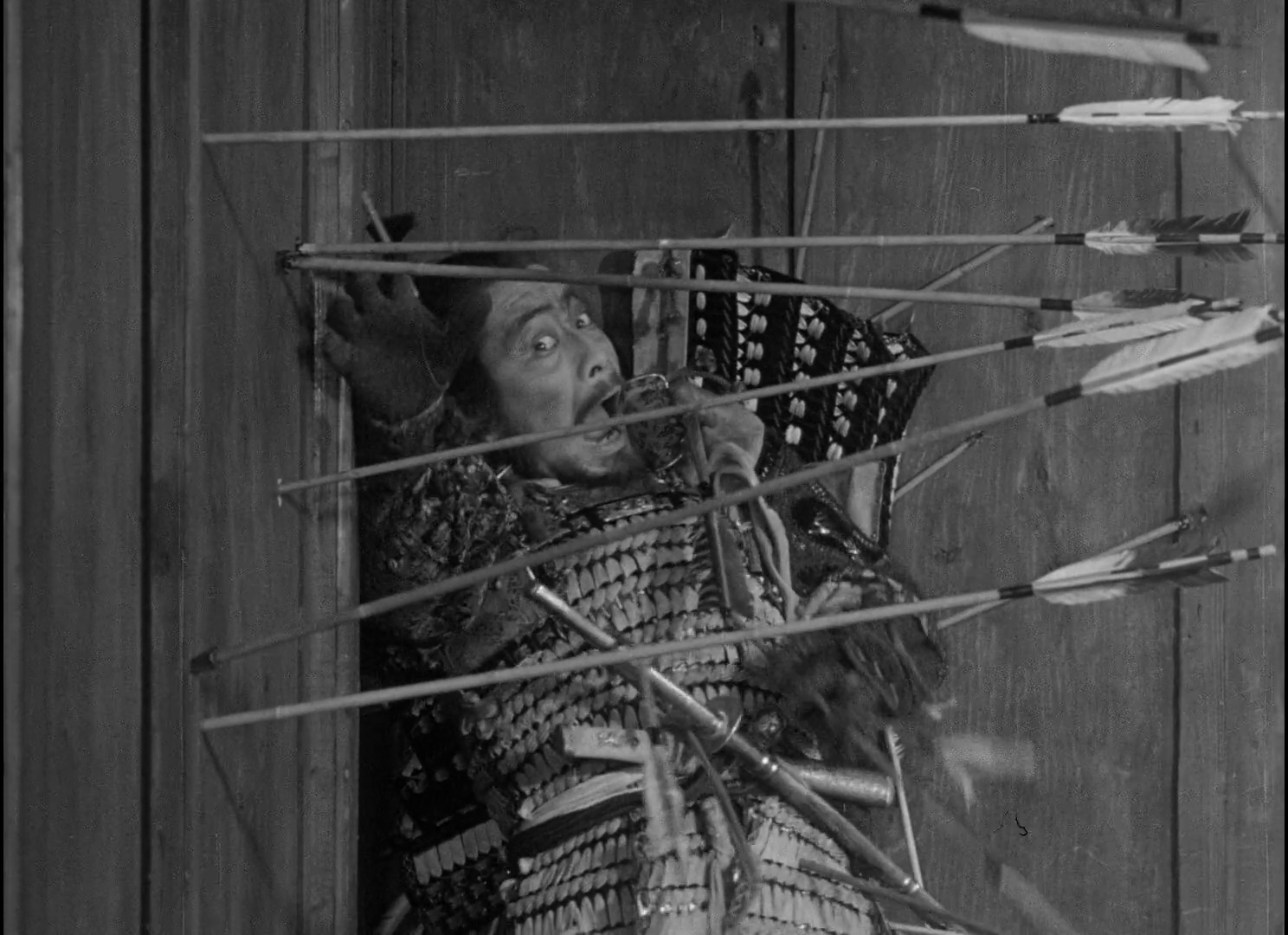
This atmospheric film remains among Kurosawa’s best, and should be seen at least once by all film fanatics.
Notable Performances, Qualities, and Moments:
- Toshiro Mifune as Taketori Washizu
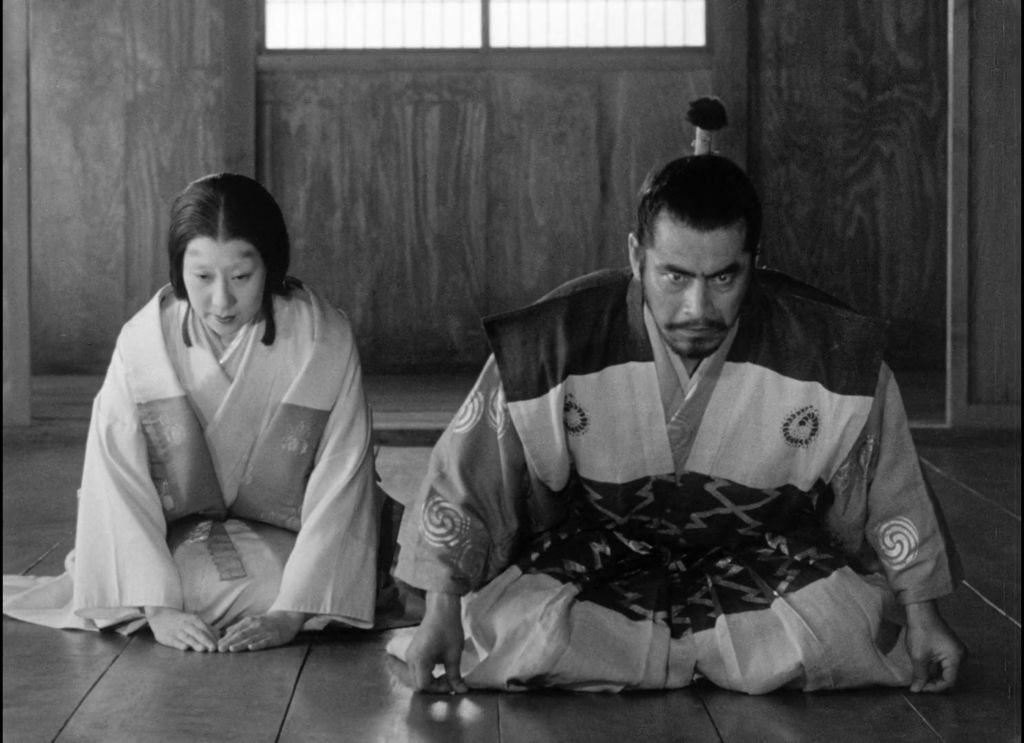
- Atmospheric cinematography and sets
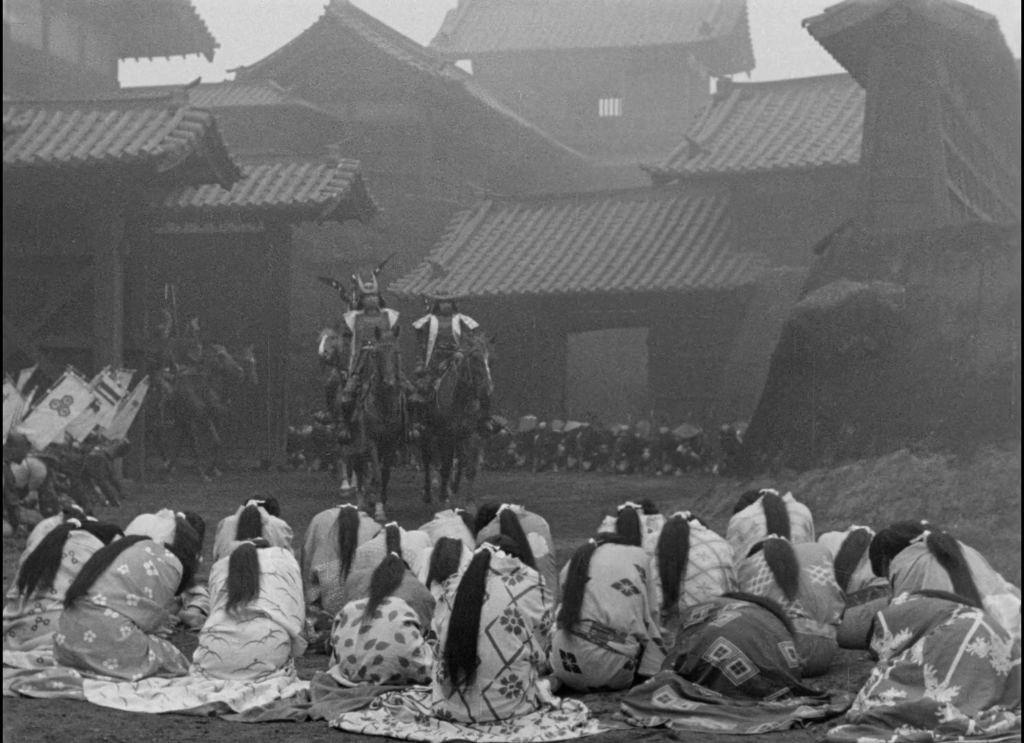
- Eiji Tsuburaya’s special effects

Must See?
Yes, as another masterful outing by Kurosawa.
Categories
- Foreign Gem
- Important Director
(Listed in 1001 Movies You Must See Before You Die)
Links:
|
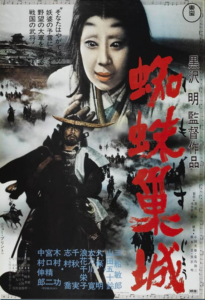






One thought on “Throne of Blood (1957)”
A no-brainer must-see, as one of Kurosawa’s best. As posted (8/22/21) in ‘The ’40s-’50s in Film’ (fb):
“Ambition makes the man.”
‘Throne of Blood’ (1957): While shooting his concise version of ‘Macbeth’, director Akira Kurosawa apparently told both Toshiro Mifune (Washizu/Macbeth) and Isuzu Yamada (Lady Asaji/Lady Macbeth) to refrain from blinking, to never do it. I don’t think either one of them blinks once.
But their open eyes tell different stories. From the time he begins to realize that being power-mad can be fun (for awhile), Mifune’s eyes take on a glassy quality of the possessed; like he’s looking through a filter and can’t grasp that the filter is giving him a false view. Ultimately he begins to wonder why climbing to the top feels like scraping bottom; this comes through in his forced, insecure laugh.
Yamada’s eyes – wide and fixed – simply reveal that she’s implacable. One wonders what she was like earlier on in the marriage. Was she silently waiting, biding her time until her husband could clearly make the move that she wants and can easily push him into? No doubt, she was always as paranoid and fearful as she implies she is. No doubt, Washizu always had a false view of her as well.
(Yamada, a brilliant actress, had a busy year in 1957 – she made 10 films, inc. Ozu’s ‘Tokyo Twilight’, in which she gives a stunning, polar-opposite, deeply sympathetic performance. Mifune was a bit less busy; he made 7.)
This is among my favorite Kurosawa films – and I’m starting to think it’s my favorite Shakespeare play. ~ not so much because of the bloodlust aspect. But because it explores how those with weaker minds and character – even those who are marginally ‘good’ – can be changed for the worse by way of power. (Polanski’s version is top-notch as well.)
Shakespeare is, of course, modified here but he’s also often intensified. Kurosawa’s take is atmospheric as hell (at times, it’s much like a horror film) – and Mifune’s final comeuppance remains one of the most shocking (and “How the hell did they *do* that?!”) death scenes in cinema history.